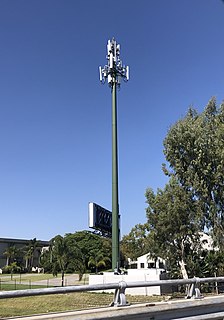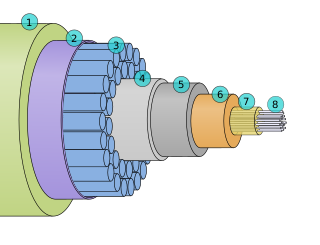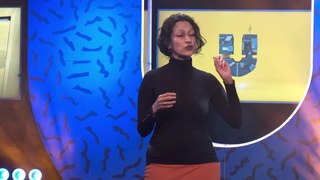See also
| | This article relating to communication is a stub. You can help Wikipedia by expanding it. |
SEACOM is a telephone submarine cable linking Hong Kong with Malaysia.
Its telephone link was opened in 1967. [1]
At one stage it also included the terrestrial radio microwave analogue link along the eastern coast of Australia, operated by the Postmaster-General's Department which was the forerunner of Telstra. This communication link rejoined the undersea cable section at Cairns in north Queensland. [2] [1]
1967: 30 March: The South East Asia Commonwealth Cable (SEACOM) officially opened by Queen Elizabeth II.
Telecommunications in the Philippines are well-developed due to the presence of modern infrastructure facilities. The industry was deregulated in 1995 when President Fidel Ramos signed Republic Act 7925. This law opened the sector to more private players and improved the provision of telecom services are better and fairer rates, leading to the creation of many telecommunication service providers for mobile, fixed-line, Internet and other services.

Telecommunications infrastructure in South Africa provides modern and efficient service to urban areas, including cellular and internet services. The Independent Communications Authority of South Africa (ICASA) is the watchdog of the telecommunications in the country.
Telecommunications in Tanzania include radio, television, fixed and mobile telephones, and the Internet available in mainland Tanzania and the semiautonomous Zanzibar archipelago.

A submarine communications cable is a cable laid on the sea bed between land-based stations to carry telecommunication signals across stretches of ocean and sea. The first submarine communications cables laid beginning in the 1850s carried telegraphy traffic, establishing the first instant telecommunications links between continents, such as the first transatlantic telegraph cable which became operational on 16 August 1858. Subsequent generations of cables carried telephone traffic, then data communications traffic. Modern cables use optical fibre technology to carry digital data, which includes telephone, Internet and private data traffic.

Telecommunications in Australia refers to communication in Australia through electronic means, using devices such as telephone, television, radio or computer, and services such as the telephony and broadband networks. Telecommunications have always been important in Australia given the 'tyranny of distance' with a dispersed population. Governments have driven telecommunication development and have a key role in its regulation.
The liberalisation of Bangladesh's telecommunications sector began with small steps in 1989 with the issuance of a licence to a private operator for the provision of inter alia cellular mobile services to compete with Bangladesh Telegraph and Telephone Board (BTTB), the previous monopoly provider of telecommunications services within Bangladesh. Significant changes in the number of fixed and mobile services deployed in Bangladesh occurred in the late 1990s and the number of services in operation have subsequently grown exponentially in the past five years.

James Ford Cairns, Australian politician, was prominent in the Labor movement through the 1960s and 1970s, and was briefly Deputy Prime Minister in the Whitlam government. He is best remembered as a leader of the movement against Australian involvement in the Vietnam War, for his affair with Junie Morosi and for his later renunciation of conventional politics. He was also an economist, and a prolific writer on economic and social issues, many of them self-published and self-marketed at stalls he ran across Australia after his retirement.
Singtel Optus Pty Limited is an Australian telecommunications company headquartered in Macquarie Park, New South Wales, Australia. It is a wholly owned subsidiary of Singtel. Optus is the second-largest wireless carrier in Australia, with 10.5 million subscribers as of 2019.
SAT-3/WASC or South Atlantic 3/West Africa Submarine Cable is a submarine communications cable linking Portugal and Spain to South Africa, with connections to several West African countries along the route. It forms part of the SAT-3/WASC/SAFE cable system, where the SAFE cable links South Africa to Asia. The SAT-3/WASC/SAFE system provides a path between Asia and Europe for telecommunications traffic that is an alternative to the cable routes that pass through the Middle East, such as SEA-ME-WE 3 and FLAG. SAT-3 has a capacity of 340 Gbit/s while SAFE has a capacity of 440 Gbit/s. The SAT-3 system together with SAFE was built by a consortium of operators. As of 2006, major investors included Telkom Group, France Telecom (12.08%), Nitel (8.39%); TCI, a subsidiary of AT&T Inc. (12.42%); and VSNL (8.93%).

Telekom Malaysia Berhad (TM) is a Malaysian telecommunications company founded in 1984. Beginning as the national telecommunications company for fixed line, radio and television broadcasting services, it has evolved to become the country's largest provider of broadband services, data, fixed-line, pay television and network services. TM ventured into the Long Term Evolution (LTE) space with the launch of TMgo, its first 4G offering. TM's 850 MHz service was rebranded as unifi Mobile in January 2018.
The Eastern Africa Submarine Cable System (EASSy) is an undersea fibre optic cable system connecting countries in Eastern Africa to the rest of the world.

The Overseas Telecommunications Commission (OTC) was established by Australia in August 1946. It inherited facilities and resources from Amalgamated Wireless Australasia Limited (AWA) and Cable & Wireless, and was charged with responsibility for all international telecommunications services into, through and out of Australia. In effect, all overseas telecommunications was nationalized. Australia was adopting a Commonwealth-wide policy that had been adopted the Commonwealth conference in 1945. The main goal was to end the artificial routing of traffic to cable or wireless depending on private financial profits.

The Internet in Africa is limited by a lower penetration rate when compared to the rest of the world. Measurable parameters such as the number of ISP subscriptions, overall number of hosts, IXP-traffic, and overall available bandwidth all indicate that Africa is far behind the "digital divide". Moreover, Africa itself exhibits an inner digital divide, with most Internet activity and infrastructure concentrated in South Africa, Morocco, Egypt as well as smaller economies like Mauritius and Seychelles.

The Internet in South Africa, one of the most technologically resourced countries on the African continent, is expanding. The Internet country code top-level domain (ccTLD) .za is managed and regulated by the .za Domain Name Authority (.ZADNA) and was granted to South Africa by the Internet Corporation for Assigned Names and Numbers (ICANN) in 1990. Over 60% of Internet traffic generated on the African continent originates from South Africa. As of July 2016, 29.3 million people were Internet users.
The Perth International Telecommunications Centre (PITC) is located in the northeastern Perth suburb of Cullacabardee, and has handled a large percentage of Australian telecommunications company Telstra's satellite communications since its opening in November 1986. Most government agencies refer to the site's location as Landsdale or Landsdale-Gnangara.
SEACOM may refer to:
Ombudsmen in Australia are independent agencies who assist when a dispute arises between individuals and industry bodies or government agencies. Government ombudsman services are free to the public, like many other ombudsman and dispute resolution services, and are a means of resolving disputes outside of the court systems. Australia has an ombudsman assigned for each state; as well as an ombudsman for the Commonwealth of Australia. As laws differ between states just one process, or policy, cannot be used across the Commonwealth. All government bodies are within the jurisdiction of the ombudsman.
SAex is a proposed submarine communications cable linking South Africa to the United States with branches to Namibia, Saint Helena, and Brazil.
Trevor Alfred Housley was a senior Australian public servant. He was Director-General of the Postmaster-General's Department from 1965 until his death in October 1968.